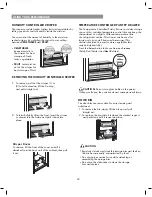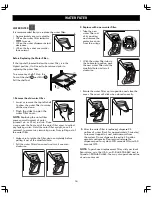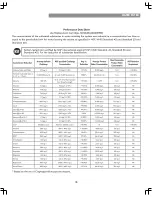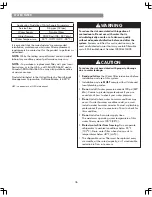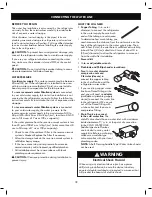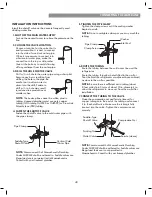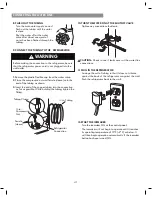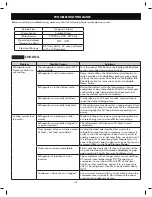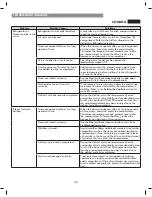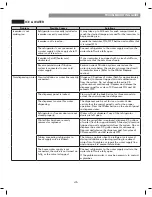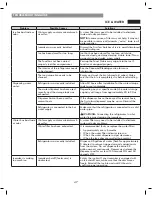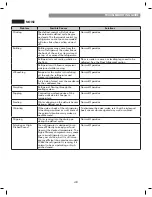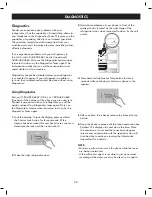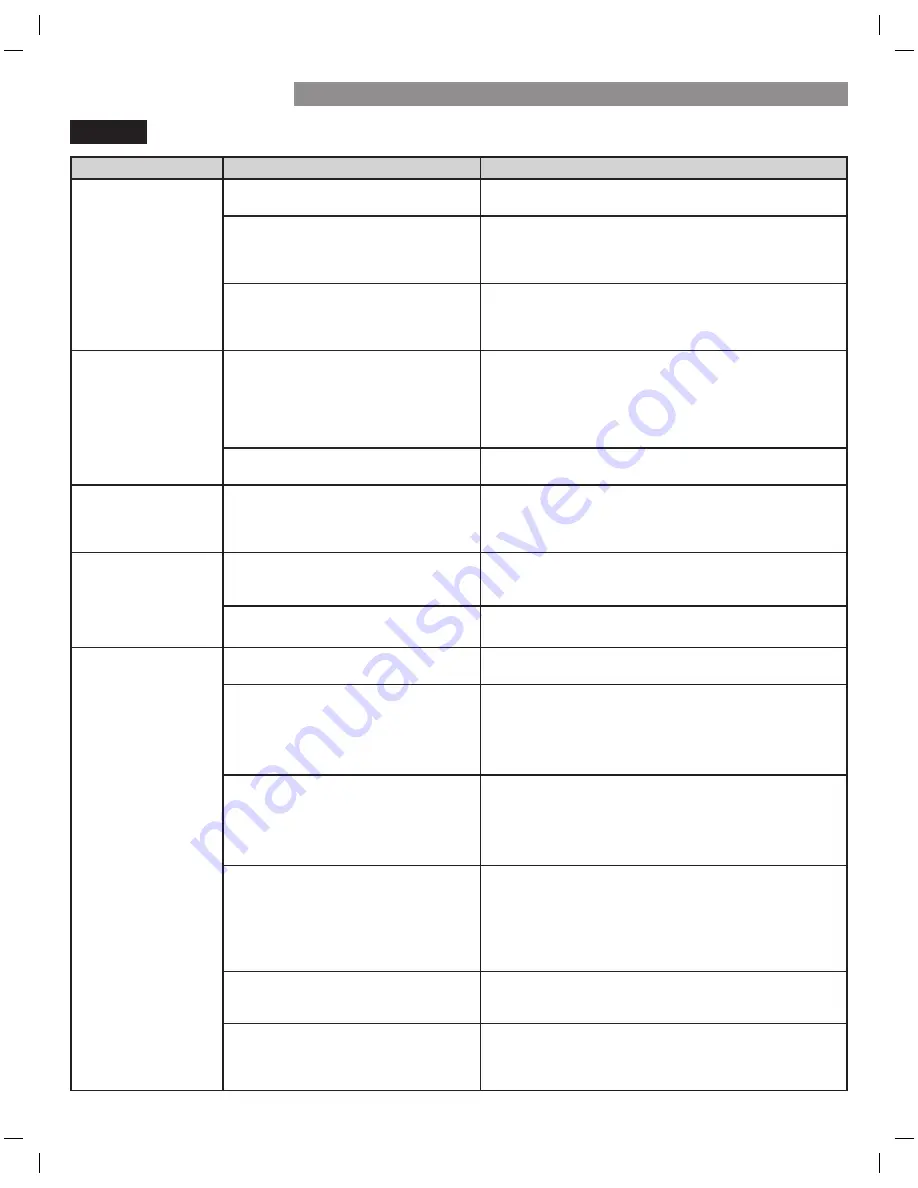
TROUBLESHOOTING GUIDE
Problem
Possible Causes
Solutions
Food is freezing
in the refrigerator
compartment.
Food with high water content was
placed near an air vent.
Rearrange items with high water content away from air
vents.
Refrigerator temperature control is set
incorrectly.
If the temperature is too cold, adjust the control one
increment at a time and wait for the temperature to
stabilize. Refer to the
Setting the Controls
section for
more information.
Refrigerator is installed in a cold
location.
When the refrigerator is operated in temperature
below 41°F (5°C), food can freeze in the refrigerator
compartment. The refrigerator should not be operated in
temperature below 55°F (13°C).
Frost or ice crystals
form on frozen food
(outside of package).
Door is opened frequently or for long
periods of time.
When the doors are opened often or for long periods
of time, warm, humid air enters the compartment. This
raises the temperature and moisture level within the
compartment. Increased moisture will lead to frost and
condensation. To lessen the effect, reduce the frequency
and duration of door openings.
Door is not closing properly.
Refer to the
Doors will not close correctly or pop open
section in the Troubleshooting section.
Refrigerator or
Freezer section is too
cold.
Incorrect temperature control settings.
If the temperature is too cold, adjust the control one
increment at a time and wait for the temperature to
stabilize. Refer to the
Setting the Controls
section for
more information.
Frost or ice crystals
on frozen food
(inside of sealed
package).
Condensation from food with a high
water content has frozen inside of the
food package.
This is normal for food items with a high water content.
Food has been left in the freezer for a
long period of time.
Do not store food items with high water content in the
freezer for a long period of time.
Icemaker is not
making enough ice.
Demand exceeds ice storage capacity.
The icemaker will produce approximately 70-182 cubes in
a 24 hour period.
House water supply is not connected,
valve is not turned on fully, or valve is
clogged.
Connect the refrigerator to a cold water supply with
adequate pressure and turn the water shutoff valve fully
open.
If the problem persists, it may be necessary to contact a
plumber.
Water filter has been exhausted.
It is recommended that you replace the water filter:
Approximately every six months.
•
When the water filter indicator turns on.
•
When the water dispenser output decreases.
•
When the ice cubes are smaller than normal.
•
Low house water supply pressure.
The water pressure must be between 20 and 120 psi on
models without a water filter and between 40 and 120 psi
on models with a water filter.
If the problem persists, it may be necessary to contact a
plumber or install a booster pump to compensate for the
low pressure.
Reverse Osmosis filtration system is
used.
Reverse osmosis filtration systems can reduce the water
pressure below the minimum amount and result in
icemaker issues. (Refer to
Water Pressure
section.)
Tubing connecting refrigerator to house
supply valve is kinked.
The tubing can kink when the refrigerator is moved during
installation or cleaning resulting in reduced water flow.
Straighten or repair the water supply line and arrange it
to prevent future kinks.
COOLING/ICE & WATER
44
Summary of Contents for 795.7259
Page 1: ...795 7259 MFL68680470 Rev 00_082917 ...
Page 35: ...35 WATER FILTER ...



